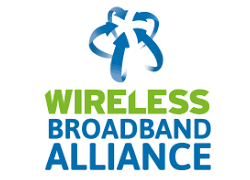802.11ax Wi-Fi standard will fast track 5G use cases by years, says WBA

The Wireless Broadband Alliance (WBA) has published a new white paper highlighting how the capabilities of the latest generation of Wi-Fi, 802.11ax, are set to revolutionise the industry by enabling a new suite of opportunities that benefit operators, enterprises and end users.
The paper, ‘Enhanced Wi-Fi – 802.11ax Decoded’, calls attention to the advantages of using 802.11ax to deliver both fundamental improvements for Wi-Fi as a standalone business and also how it facilitates early delivery of many “5G use cases”. 802.11ax not only creates a capability step change, but also access to the enormous Wi-Fi market through its backwards compatibility.
With nearly 70% of smartphone data being carried over Wi-Fi networks, it is clear that cellular deployments in licensed spectrum have not kept pace with consumer demands for wireless data. This has led to the acceptance of Wi-Fi as an important complement to cellular access, and 3GPP’s definition of its 5G core network re-enforces the ability to better integrate Wi-Fi networks as well as its 5G New Radio (NR).
While Wi-Fi can complement cellular access and expedite 5G time-to-market, the WBA has released its latest paper to demonstrate how deployment of 802.11ax can lead to early delivery of some 5G use cases by several years and can deliver many of the market requirements as a standalone technology today – all backwardly compatible and can meet the deployment requirements with a strong return on investment and time to market.
The paper identifies the newly introduced features of 802.11ax that address the real business challenges operators and enterprises are looking to solve. These include:
-
- Multi-User MIMO Uplink & Downlink to increase channel capacity when servicing multiple, simultaneous devices, providing a significant capacity boost for enterprise and carrier networks, large public venues and multi-dwelling buildings.
-
- Dual Band Frequencies supporting 2.4 GHz and 5GHz to expand spectrum usage possibilities, as well as New Frequency Ranges. This includes the extension of support to the 6GHz band, enabling new swathes of spectrum to be leveraged to deliver improved performance whilst maintaining support to all previous Wi-Fi generations, creating access to wide market
-
- Flexible Channel Sizes and Resource Units will allow operators to offer more efficient IoT support, such as connections that require lower data rates to use narrow dedicated channels to save power. This also means carriers are able to support both broadband based services as well as IoT over the same network.
-
- The new Target Wake Time feature allows IoT devices to sleep to reduce access contention and wakeup in scheduled time slots thereby significantly improving device battery life.

Tiago Rodrigues
In addition to the specific features, the WBA highlights the business advantages of the new standard, from investment effectiveness, speed to market and capacity and density improvements.
The paper recognises four key drivers of higher Return on investment (ROI) of Wi-Fi for retailers, manufacturers, service industries, transportation and communities in particular: low cost of deployment; return on investment of unlicensed spectrum; the user value of ubiquitous access; and the free, service-based model of Wi-Fi, over the paid-for access-based model for cellular.
“Investment in 802.11ax offers operators and enterprises a compelling proposition to dramatically accelerate the delivery of 5G use cases, at a much lower cost,” said Tiago Rodrigues, general manager at the WBA. “However, it shouldn’t be viewed as ‘just the next evolution in Wi-Fi technology’ that can complement cellular. The WBA has developed this paper as part of its venture to raise awareness of 802.11ax as a standalone technology, providing new capabilities which can be used by the entire industry to address a whole new set of opportunities and use cases.”
The WBA and its members invite other industry players to join its Enhanced Wi-Fi 802.11ax work group, which aims to ensure the technology is ready for operator deployment. With plans for early trials of 802.11ax in end-to-end real-life operator networks, work is already underway to examine the key 802.11ax features for deployment scenarios, define the guidelines for the technology, and validate the compelling technical and business benefits of the standard.
To download the white paper, Enhanced Wi-Fi – 802.11ax Decoded click here.
Comment on this article below or via Twitter @IoTGN
